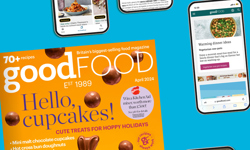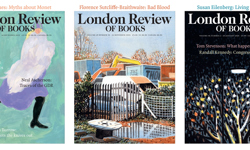In a recent ‘status of the industry’ piece, Folio: noted several of the megatrends driving this frenzy of activity: programmatic advertising will account for $15 billion of the $58 billion in digital advertising this year. Many branded media see 50% of their traffic from mobile, but monetising it remains elusive. The spread of content marketing is turning advertisers into competitors. And the primo challenge: the relentless shift of ad revenue to businesses "more adept at segmenting and targeting". Here's an eye-opener: the combined 2014 ad revenue of Google and Facebook, at $78 billion, exceeded the combined ad revenue of the entire newspaper and magazine industries.
Looking more closely at audience and advertising trends: between first-half 2014 and first-half 2015, leading US consumer magazines' collective mobile audience leapt 67%, and their video audience grew 10%, even as the audience share for print and digital editions declined from 65% to 58%, according to MPA's Magazine Media 360 audience report. eMarketer estimates that this year, ad spending in US consumer magazine media will total $19.02 billion, with print at $15.05 billion and digital at $3.96 billion. Total ad spending in magazine brands is projected to grow 3.8% to $19.75 billion by 2019, with digital growing 12.6% to $4.46 billion – yet still accounting for just 23% of the pie, as print ad revenue edges up 1.6% to $15.29 billion.
Print audience declines reflect ongoing newsstand losses and some paring of subscription levels. As for paid digital editions, in the first half, their sales were essentially flat among large, audited US magazines, reports Talking New Media. Hearst Magazines International president Duncan Edwards recently bluntly stated that Hearst's business strategy doesn't count on digital edition sales because people won't pay for digital editions with so much free content available. While still producing magazine apps, Hearst has de-prioritised them, regarding them as a route to the content available on its global sites, he said.
Clearly, the action is elsewhere. On the advertising front, the big buzz is currently around Time Inc's expanded Print Programmatic 2.0 programme. While print can't cost efficiently deliver the split-second hypertargeting of algorithmically-driven, programmatic web ad buying, Time Inc's programme is, according to the pseudonymous industry blogger D. Eadward Tree, reportedly attracting business from ad buyers previously uninterested in print.
As "Tree" points out, that's because, like web-based programmatic, Time Inc's programme bypasses the time-wasting morass of paperwork and approvals in traditional print buying, by enabling buys through an online marketplace. Even more potentially revolutionary, it appears to bring publishers a critical step closer to realising their dream of at last throwing off the yoke of circulation rate bases and auditing, to compete on a level playing field with digital and other media that sell strictly on audience metrics (however egregiously lacking in accountability those metrics are at this stage – talking of morasses!).
New revenue streams
Among the plethora of potential new revenue streams being pursued, video – and specifically "premium" video content designed to drive paid web subscriptions or views – are a particular focus at present. Time Inc is building a studio in its new Manhattan HQ, with plans to double its live video production (it already produces two daily live shows and three weekly live series under various magazine brands). But its latest release is a documentary series about New Orleans, produced with outside film studios, that's available only to paid subscribers to Time magazine's site, Time.com; on other paid web channels (Sundance Doc Club, Hulu); and for purchase on iTunes, Google Play and Amazon.
Another recent example: enthusiast publisher TEN's new Motor Trend OnDemand video platform, described as a "Netflix for Motorheads".
Speaking of TEN, CEO Scott Dickey recently referred to magazine media's struggle to transition to a new business paradigm as "crossing the chasm". And, intriguingly, while content and advertising for online and mobile continues to dominate investment and resources, there have been a few visible signs of late that large publishers are putting some effort into bolstering, or even innovating in, the print medium that's still by far their core revenue and profit source – the "bridge" that they can't afford to burn if they hope to cross that business model chasm.
Notably, Hearst Magazines exec Michael Clinton revealed that the company plans to roll out 25 new consumer marketing initiatives over the next six months – including (mirabile dictu) newsstand innovations. One exciting one, in my view: Hearst used beacon technology to send a push notification that Elle's September fashion issue had arrived to the mobile devices of women passing by, or already inside, Barnes & Noble's 600 US stores. "Over time, we’ll implement this technology across multiple channels and with multiple magazines," Clinton said.
Hearst also created a mobile newsstand – a branded truck that visited heavily trafficked areas around Manhattan to sell copies of its magazines' September issues, and give away advertiser samples and gift cards. Fans could follow the truck on social at #MagMobile2015. "We realised that there are plenty of opportunities for our brands at music and food festivals, beaches and parks – all kinds of locations where magazine retailers may not be found," Clinton noted. Might this concept somehow be scaled up to be more than a drop in the single-copy bucket for Hearst and other publishers?
But wait, there's more: "We’re exploring opportunities to offer subscriptions in new ways, including using programmatic advertising to targeted consumers within our universe [my italics], across all Hearst properties," using social media to drive subscription interest, and sending 100,000 copies of Good Housekeeping to prospects because "providing consumers with a full issue instead of a direct mail piece offers a more complete picture" of GH's recent editorial transformation, Clinton reported.
Let's hope that other publishers are inspired to follow Hearst's example, or even partner with Hearst, to at last market print magazines in new ways.












